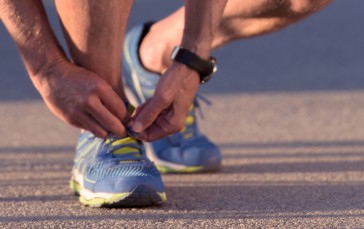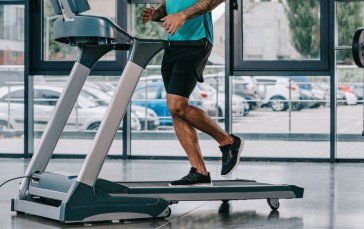Keep The Distance Going On Long Runs
If you’re into running, you’ll know about hitting the wall. It feels like you’ve suddenly lost all of your energy and you can’t go on anymore. But once you’ve pushed through that feeling, you feel like a superhero. Some people experience this more than others and it can be really difficult for some runners to overcome. Fortunately, there are some tried-and-tested things you can do to improve your stamina and run for longer. Keep the distance going on long runs with these great tips.

Try Interval Training
When you think of interval training, you might be thinking of extreme exercises that are designed to exhaust you super quick. But don’t worry, we’re not telling you to start sprinting when you hit the wall. Instead, runners sometimes use interval training to keep going. At its most basic level interval training is changing between two different levels of exercise. So, when you feel like you can’t go on anymore, switch to a walking pace for a few minutes. Then, go back to a gentle jog. Do this a couple of times and it should help you through the pain.
Eat Some Energy Food
There’s a scientific reason that you feel exhausted when you hit the wall. Basically, you are experiencing a depletion of glycogen stores in your liver and muscles. If you hit the wall, you can remedy it by eating some high glycemic index foodstuffs, like jelly babies or sports gel. Take some of these in your fanny pack or running jacket and you should be able to power through.
You can also eat certain foods before a long run to help avoid hitting the wall at all. Eat a balanced breakfast with at least 100g of carbohydrates in. Eggs, fruits, and nuts are also good foods to eat before a long run.

Create Targets
Pushing on through the wall is a psychological thing, so you can help yourself by setting targets. Slow down your pace and set a couple of distance-based targets without worrying about your time. For example, commit to running for another mile before slowing to a walking pace. The focus on this target should help you forget about your energy levels.
Set A Destination
This tip really ties in with the last. If distance targets don’t work for you, focus on a destination instead. If you’re running one of your favorite routes, you’ll probably know a few destinations along the way that you can aim for. This will provide you with a sense of purpose, and by the time you reach the destination, you’ll be well past the wall.

Focus On Your Breathing
Again, the aim is to take your mind off the pain of running. One of the most common techniques for this is to focus on your breathing. It’s one of the first things that long-distance runners are taught, but it’s easy to forget about when you’re exhausted. If you’re thinking of quitting, go back to basics and focus on creating a breathing rhythm. Some runners find that the right tempo music is essential to getting their breathing right.
Get The Right Gear
This is something you really need to do before you set out running. If you don’t have high-quality running shoes and running socks, your feet will be the first thing to suffer. And there’s no coming back from blisters. Running shorts are important as well. There’s nothing like chafing on the inside of your legs to make you quit early. Invest some money in your running gear and it will inspire you to keep going.

Keep Checking Your Progress
One of the key things that make runners quit is a lack of motivation. You’ve already been running for 10K, so why do you need to keep running? You’ve probably already set your goals as a runner. But have you been tracking your progress? A lot of new runners forget to do this, and it’s such a good way of keeping yourself motivated. How far have you come since day one? How many miles have you run over a month? You get the picture. Fitness trackers are an excellent tool to make this process easy, and you can check them mid-run to spur yourself on.
Pace Yourself
If you’re getting tired early on in a long-distance run, it’s probably because you’re not pacing yourself correctly. The longer you run, the slower you should be running. You can’t set out on a marathon at your 10K pace. The best way to find your perfect running pace is by testing yourself. Run different distances and time each kilometer or mile. See if you slow down towards the end. Again, fitness trackers like the Fitbit are really useful for tracking your pace.

Try Positive Self Talk
This one might make you feel silly, but it’s proven to work. It’s another psychological trick you can use to pump yourself up. You don’t have to do it out loud, but by repeating something positive to yourself, you could go the extra mile. This self-talk can either be orientated towards your performance or the way you feel. Whatever method you choose, just make sure it’s super positive.
Hydrate
All runners know the importance of hydration. It’s an essential part of your body’s mechanism and without it, your performance will suffer drastically. However, you don’t want to be carrying around huge bottles of water weighing you down. We’d highly recommend buying a hydration pack so that you can get quick and regular access to fluids. They’re so much better than water bottles because you don’t have to interrupt your running flow to use them.

Make ‘The Wall’ Your Friend
Lastly, you should try and relish hitting the wall. This is another mind trick that will change the way you feel about your exhaustion. Now that you understand the wall and you know how to beat it; it can just become part of the enjoyment of a long run. Think about it this way: if you’re hitting the wall, it means you’re pushing your body to its limits.









